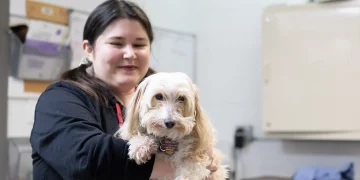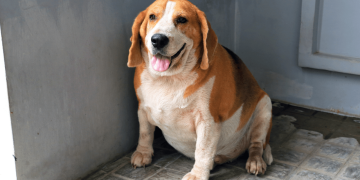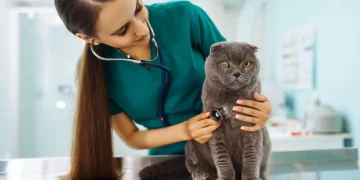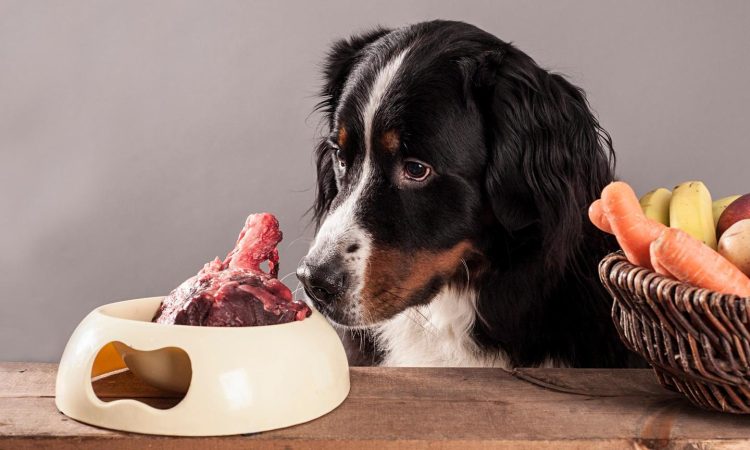Feeding pets raw meat has become a popular trend among pet owners, especially those who follow the “raw food” or “BARF” (Biologically Appropriate Raw Food) diet for their cats and dogs. Proponents of raw food diets claim that feeding pets raw, unprocessed food is more natural and beneficial to their health. However, while there are potential benefits to raw feeding, it also carries certain risks. This article will explore whether it is safe to feed your pet raw meat, what the potential benefits and risks are, and what you need to consider before deciding whether raw feeding is right for your pet.
What is Raw Feeding?
Raw feeding refers to a diet that consists primarily of raw meat, bones, organs, and sometimes vegetables. This approach is based on the idea that pets, especially dogs and cats, are carnivores (or obligate carnivores, in the case of cats) and should be eating foods similar to those their ancestors would have consumed in the wild. The raw food diet is often marketed as being more natural, as it avoids processed pet food and the additives, preservatives, and fillers often found in commercial kibble.
In a typical raw food diet for pets, you may find:
- Raw Meat: Chicken, beef, lamb, turkey, etc.
- Organs: Liver, kidney, and other internal organs, which are nutrient-dense.
- Bones: Raw bones (never cooked, as they can splinter) are often included to provide calcium and other minerals.
- Vegetables and Fruits: Some raw feeding plans incorporate small amounts of veggies or fruits for fiber and vitamins.
- Supplements: Raw food diets sometimes include added vitamins, minerals, and oils (e.g., fish oil for omega-3 fatty acids) to ensure nutritional balance.
Potential Benefits of a Raw Food Diet for Pets
While raw feeding may seem like a more natural approach to pet nutrition, there are mixed opinions about its safety and efficacy. For those who choose to feed their pets a raw food diet, there are several potential benefits:
1. Healthier Skin and Coat
Many pet owners report that raw food diets result in shinier, softer, and healthier fur coats. This is often attributed to the high-quality fats, oils, and proteins found in raw meat, which can improve skin health and reduce issues like dry skin or excessive shedding.
2. Improved Digestion
Some raw food advocates claim that feeding pets a diet closer to their natural prey improves digestion. Raw food is typically less processed, which can lead to fewer gastrointestinal problems like bloating, gas, or diarrhea. The natural enzymes in raw meat may also support digestion.
3. Increased Energy and Vitality
Raw food diets are typically high in protein, which may lead to improved muscle tone and higher energy levels in pets. Some pet owners report that their dogs and cats appear more active and alert after switching to a raw food diet.
4. Better Oral Health
Chewing raw meat and bones is said to help clean teeth and gums, reducing the risk of dental diseases like plaque, tartar buildup, and gum disease. Many commercial pet foods, especially kibble, are often not effective at cleaning teeth, and raw bones provide a natural way for pets to keep their teeth clean.
5. Weight Management
Raw food diets can help manage a pet’s weight, as they often contain fewer carbohydrates and fillers than commercial pet foods. High-protein, low-carb meals can help regulate appetite, reduce the risk of obesity, and support lean muscle mass.
Risks and Concerns of Feeding Raw Meat to Pets
While there are potential benefits to feeding pets raw meat, there are also several significant risks and concerns to consider. Before deciding whether raw feeding is right for your pet, it’s crucial to be aware of these potential dangers.
1. Bacterial Contamination
Raw meat, especially chicken and pork, can harbor harmful bacteria like Salmonella, E. coli, and Campylobacter. These bacteria can cause serious infections in pets, leading to symptoms such as vomiting, diarrhea, fever, and abdominal pain. Additionally, pets can spread these bacteria to humans, especially if they are handling raw meat or pet waste.
- Risk: Both pets and humans can be exposed to harmful bacteria from raw food. Pets, particularly those with weakened immune systems, are more susceptible to infection.
- Precaution: If you choose to feed your pet raw meat, proper food handling and hygiene are essential. Always wash your hands and any surfaces that come into contact with raw meat. Consider consulting with a vet about the best way to safely prepare and store raw food.
2. Nutritional Imbalance
While raw meat may seem like a natural choice, it can be challenging to balance all the necessary nutrients in a homemade raw diet. Cats and dogs have very specific nutritional requirements, and feeding them only raw meat without proper supplementation can result in deficiencies or imbalances in vitamins, minerals, and amino acids.
- Risk: Raw food diets may lack essential nutrients such as calcium, phosphorus, or vitamins A and D. For example, feeding a cat only muscle meat without organ meats or bones can lead to a lack of taurine (an essential amino acid for cats), leading to heart problems.
- Precaution: If you choose raw feeding, you must carefully research the specific dietary requirements of your pet and ensure their diet is nutritionally complete. Many commercial raw food brands offer pre-formulated meals that are balanced to meet pets’ needs, which can help avoid deficiencies.
3. Choking and Internal Injury from Bones
Raw bones are a common part of raw food diets, but they can pose serious risks if not handled correctly. While raw bones are generally safer than cooked bones (which can splinter), they can still cause choking, broken teeth, or injury to the digestive tract. Small bones can get stuck in the throat or intestines, and large bones may cause damage to teeth or gums.
- Risk: Choking or injury to the gastrointestinal system due to improperly sized bones or aggressive chewing.
- Precaution: Always supervise your pet while they are chewing raw bones. Offer only bones that are appropriate for their size and chew strength. Avoid giving small, sharp bones that could cause injury.
4. Parasites
Raw meat can contain parasites such as tapeworms, roundworms, and other intestinal parasites. These parasites can lead to significant health problems, including gastrointestinal issues, malnutrition, and more serious conditions if left untreated. Freezing raw meat for several days before feeding it can help kill some parasites, but not all of them are eliminated by freezing.
- Risk: Parasites that can cause digestive issues and more severe health conditions.
- Precaution: Ensure the meat you feed your pet is from a trusted source, and consider freezing it to reduce the risk of parasites. Regular deworming and veterinary checks are also essential.
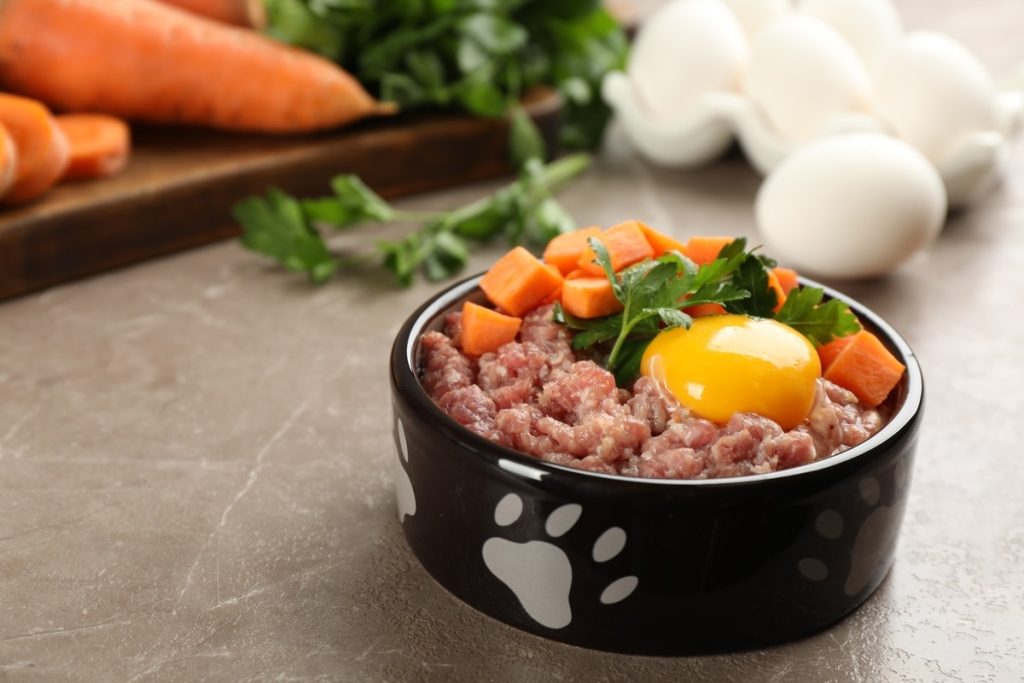
5. High Cost and Time-Consuming
Raw feeding can be costly and time-consuming. High-quality raw meat and supplements can be expensive, and preparing raw meals for your pet may require more effort than simply opening a bag of commercial pet food. Additionally, raw food requires careful storage to prevent spoilage, which can be a hassle for busy pet owners.
- Risk: Time-consuming meal preparation and higher costs compared to commercial pet food.
- Precaution: Ensure that you are prepared for the time and financial commitment involved in feeding a raw diet. Many pet owners opt for commercially prepared raw food for convenience.
Is Raw Feeding Right for Your Pet?
Deciding whether to feed your pet raw meat should be based on your pet’s individual needs, health status, and your ability to manage the risks involved. If you are considering switching to a raw food diet, here are some important steps to take:
- Consult with Your Veterinarian: Before making any changes to your pet’s diet, it’s important to discuss it with your vet, especially if your pet has any pre-existing health conditions. Your vet can help you design a balanced, safe raw food plan or recommend appropriate commercial raw food brands.
- Research Thoroughly: Educate yourself about raw feeding and ensure you’re aware of the potential risks, including bacterial contamination, nutritional imbalances, and the risk of parasites. There are many resources available to help guide you in making the right choice for your pet.
- Consider Commercial Raw Food: If you choose to feed your pet raw food, consider using commercially prepared raw food that is nutritionally balanced and safe. These products are formulated to meet your pet’s dietary needs while minimizing the risks associated with homemade raw feeding.
- Prioritize Food Safety: Raw food handling and hygiene are crucial. Always wash your hands, clean surfaces, and store raw meat properly to avoid contamination. Ensure that bones are appropriate for your pet’s size and chewing ability.
Conclusion
Feeding pets raw meat can offer some potential benefits, such as improved coat condition, better digestion, and more energy. However, it also carries significant risks, including bacterial contamination, nutritional imbalances, and potential injury from bones. If you choose to feed your pet a raw food diet, it is essential to ensure that the diet is nutritionally balanced and to take all necessary precautions to minimize health risks. Consulting with your veterinarian is crucial to ensure your pet’s safety and health when considering a raw food diet.













